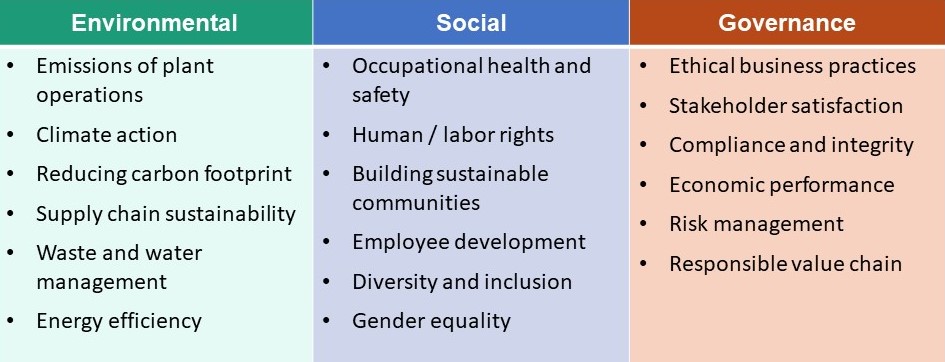901 Tower Drive • Suite 420 •
Troy, Michigan 48098
• P: 248.269.1122 •
E: bianchipr@bianchipr.com
901 Tower Drive • Suite 420 •
Troy, Michigan 48098
• P: 248.269.1122 •
E: bianchipr@bianchipr.com
As we dive into the findings from our recent study of ESG (environmental, social and governance) reporting habits of the top North American automotive suppliers (according to Automotive News’ most recent Top Suppliers Listing), we thought it would be helpful to review some of the most popular terms and reporting standards.
To start, let’s answer the basic question: What is an ESG report?
An ESG report is a report published by a company or organization about its environmental, social and governance impacts. As company stakeholders are requesting that companies share more about their strategies and goals in these areas, an ESG report serves as a tool companies can use to be transparent about the risks and opportunities they face.
Another common term you often hear in conjunction with ESG is CSR (corporate social responsibility), but what’s the difference between the two?
CSR is typically viewed as the qualitative side of a report, as it gives context on the overarching social, environmental and economic concerns, and gives stakeholders insight into company values. On the other hand, ESG focuses more on the quantitative results, as an ESG approach makes a business’ efforts measurable.
Types of ESG Reports
While many of these reports include similar types of data and information, you’ll find companies refer to their reports differently. The two most popular types of ESG reports for top automotive suppliers are a sustainability report and an integrated report.
So, what’s the difference?
Sustainability reports are generally written for a broad stakeholder base and communicate the company’s impacts on the economy, environment and social issues.
An integrated report focuses more on financial capital and how the organization creates value and is a combination of a supplier’s traditional annual report and an ESG report.
ESG Reporting Standards
To report their ESG efforts and progress, companies typically incorporate at least one, but most commonly, multiple reporting frameworks / standards when developing their reports.
While a few of the top 25 North American automotive OEM suppliers have created their own company-specific framework for reporting, most of the top North American automotive suppliers use one (or more) of these common ESG standards:
As we identified in our previous ESG insights blog post, 67% of top auto supplier reports clearly identified the specific ESG topics that are most important to the company and their reporting efforts.
This list of material topics is typically developed through a materiality assessment, which is a process designed to help a company define and understand which sustainability topics are most important to the company and its stakeholders. The materiality assessment not only helps a company review its risk factors and business processes, but it also helps a company to better understand and meet the expectations of its stakeholders.
To complete a comprehensive assessment, a company needs to conduct a survey of its stakeholders both inside and outside of the company. The results will determine the company’s top ESG issues based upon survey responses and rankings. From this point, a company can determine which topics should be represented in its report. The results are sometimes shown visually in its report in the form of a materiality matrix.
Top ESG Topics for Auto Suppliers
Now, you might be wondering what topics are typically covered. And while there are hundreds we could list here and the mix of topics varies from report to report, here’s a list of some of the topics most frequently found in the top automotive suppliers ESG reports.

(Note: We’ll identify the most common topic areas in an upcoming blog post.)
If you’d like to learn more about automotive supplier ESG reporting or obtain insights on how your company’s next ESG communications can be enhanced, keep following this blog for future posts.
And if you have a specific question, you can ask us here: bianchipr@bianchipr.com.

Author: Jaclyn Bussert
Jaclyn is a senior account executive at Bianchi PR with 10 years of B2B PR experience assisting and supporting our account teams in a variety of public relations activities.
You might also be interested in: